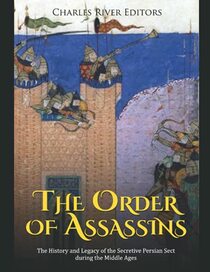The original assassins, known as the Hashashin, were a well-oiled fraternity of extremist death-dealing agents recruited by the Nizari Ismaili state. The Assassins considered themselves to be martyrs and targeted prominent enemies between the 11th and 13th-centuries, all in the name of religion and politics.
After Muhammed died in 632 in Medina, the entire world of Islam was shaken to its core. There was conflict about who should lead the Islamic faith and this caused the schism known as the "Sunni-Shia Divide." Without a supreme authority to decide or clarify canonical questions, the followers pursued their own interpretations of the Quran. Here's how they are divided.
Sunnis - 85-90% of all Muslims, followed Abu Bakr As-Siddiq, companion and father-in-law of Muhammad (through the prophet's third wife, Aisha). These followers are mostly in Saudi Arabia, Egypt, Jordan, and Indonesia. This group is more democratic, things are decided by vote, etc.
Shiites - 10-15% of all Muslims, followed 32-year-old Ail ibn Abu Talib (Muhammed's blood cousin & husband of the prophet's daughter, Fatimah). These followers are mostly in Iran, Iraq, Syria, Turkey, Azerbaijan, Yemen, Palestine, and Lebanon. As Ali was the closest relative to Muhammed, they thought he should decipher, defend, and uphold Islamic law.
Most of the difficulties between the groups are political in nature. There was constant conflict over who would lead the Muslims. But in 1095, Hassan al Sabbah created the Nizari Ismaili State of Persia and Syria. These Nizari Ismailis were separatists; they were vilified by Sunnis, Shiites, and mainstream Ismailis alike. But they were wildly successful murderers. This book recounts some of the most infamous ones. Before they folded, the Assassins even killed a couple of Christians. In the end, it was the Mongols who assisted with the demise of the Assassins. Genghis Khan's grandson Mongke Khan, and his brother Hulagu, viceroy of Iran, set about destroying the Assassins.
To this day, there are still about 15 million Muslims across 25 countries who espouse the Nizari Ismaili creed. Aga Khan IV is the 49th Imam and the current spiritual leader of the Nizari Ismailis.
After Muhammed died in 632 in Medina, the entire world of Islam was shaken to its core. There was conflict about who should lead the Islamic faith and this caused the schism known as the "Sunni-Shia Divide." Without a supreme authority to decide or clarify canonical questions, the followers pursued their own interpretations of the Quran. Here's how they are divided.
Sunnis - 85-90% of all Muslims, followed Abu Bakr As-Siddiq, companion and father-in-law of Muhammad (through the prophet's third wife, Aisha). These followers are mostly in Saudi Arabia, Egypt, Jordan, and Indonesia. This group is more democratic, things are decided by vote, etc.
Shiites - 10-15% of all Muslims, followed 32-year-old Ail ibn Abu Talib (Muhammed's blood cousin & husband of the prophet's daughter, Fatimah). These followers are mostly in Iran, Iraq, Syria, Turkey, Azerbaijan, Yemen, Palestine, and Lebanon. As Ali was the closest relative to Muhammed, they thought he should decipher, defend, and uphold Islamic law.
Most of the difficulties between the groups are political in nature. There was constant conflict over who would lead the Muslims. But in 1095, Hassan al Sabbah created the Nizari Ismaili State of Persia and Syria. These Nizari Ismailis were separatists; they were vilified by Sunnis, Shiites, and mainstream Ismailis alike. But they were wildly successful murderers. This book recounts some of the most infamous ones. Before they folded, the Assassins even killed a couple of Christians. In the end, it was the Mongols who assisted with the demise of the Assassins. Genghis Khan's grandson Mongke Khan, and his brother Hulagu, viceroy of Iran, set about destroying the Assassins.
To this day, there are still about 15 million Muslims across 25 countries who espouse the Nizari Ismaili creed. Aga Khan IV is the 49th Imam and the current spiritual leader of the Nizari Ismailis.




